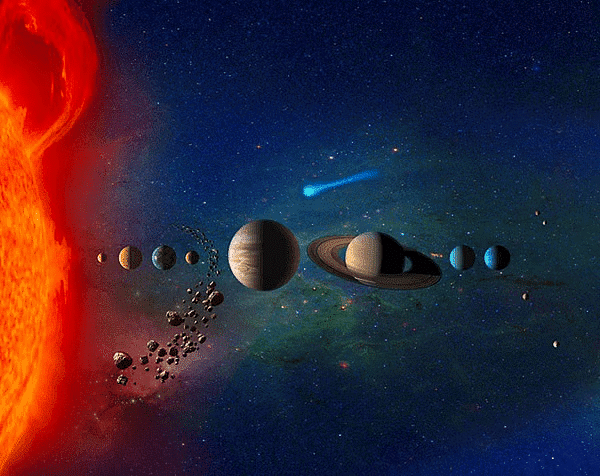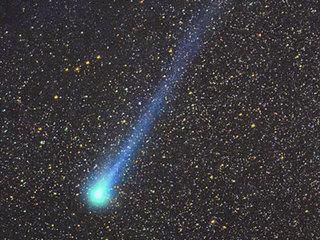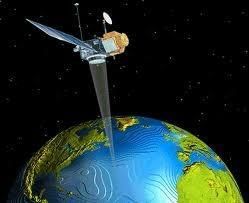Grade 9 Exam > Grade 9 Notes > Physical Science for High School > Chapter Notes - Stars and the Solar System
Stars and the Solar System Class 8 Notes Science
| Table of contents |

|
| Celestial Objects |

|
| The Moon |

|
| The Moon's Surface |

|
| The Stars |

|
| Constellations |

|
| The Solar System |

|
| The Sun |

|
| The Planets |

|
| Some Other Members of the Solar System |

|
| Artificial Satellites |

|
Celestial Objects
- The moon is the brightest object in the night sky.
- Celestial objects include stars, planets, the moon, and other objects in the sky.
- Not all celestial objects are similar.

The Moon
- The shape of the moon changes daily.
- Days with a perfectly round moon are known as full moon days.
- The moon gradually appears thinner until it's not visible on the new moon day.
- Following the new moon, a crescent moon is observed, gradually growing larger.

- The changing shapes of the moon are called phases.
- The time between full moons is slightly longer than 29 days.
- Phases occur due to sunlight reflecting off the moon towards Earth.
- The moon revolves around the Earth, which in turn revolves around the Sun.
- Relative positions of the Sun, moon, and Earth vary during full moon and new moon days.
- The illuminated part of the moon visible from Earth increases after the new moon and decreases after the full moon.
- The moon completes one rotation on its axis per revolution around the Earth.
Question for Chapter Notes - Stars and the Solar SystemTry yourself: What gives rise to the phases of the moon?View Solution
The Moon's Surface
- The moon, often a subject of fascination for poets and story-tellers, was found to have a dusty and barren surface by astronauts.
- The moon's surface features numerous craters of varying sizes and a significant number of steep, high mountains, some rivaling Earth's highest peaks.
- Lacking an atmosphere and water, the moon poses the question of whether any form of life could exist there.
- Due to the absence of an atmosphere on the moon, sound cannot propagate, raising the question of how sound could be heard in such an environment.

The Stars
- Stars are abundant in the night sky.
- Not all stars have the same brightness or color.
- Stars emit their own light.
- The Sun is a star, appearing larger due to proximity.
- Stars, being significantly farther away, appear as points.

- Daytime Stars: Stars are present in the sky during the day but are overshadowed by sunlight.
- Star Movement: Stars seem to move from east to west.
- Pole Star:The Pole Star remains fixed and does not appear to move.

Some Important Points
- The Sun is approximately 150 million kilometers away from Earth.
- Alpha Centauri, the next nearest star, is about 40 trillion kilometers away from Earth.
- Some stars are even farther away, and these vast distances are often measured in light-years.
- A light-year is the distance that light travels in one year, given that the speed of light is about 300,000 kilometers per second.
- The distance from the Sun to the Earth can be understood as roughly 8 light minutes.
- Alpha Centauri is approximately 4.3 light years away from Earth.
Question for Chapter Notes - Stars and the Solar SystemTry yourself: What causes the changing shapes of the moon?View Solution
Constellations
- Constellations are groups of stars that form recognizable shapes in the sky.
- To identify constellations in the night sky, you should know their appearance and where to look.
- Ursa Major, also known as the Big Dipper or the Great Bear, is a well-known constellation visible in the summer night sky. It resembles a ladle or a question mark and contains seven prominent stars.

- All stars appear to revolve around the Pole star, which is not visible from the southern hemisphere.
- Orion, known as the Hunter, is a magnificent constellation visible in winter evenings. It features seven or eight bright stars, with the three middle stars forming the belt of the hunter.

- The star Sirius, the brightest in the sky, is located near Orion. It can be found by drawing a line through the three middle stars of Orion towards the east.
- Cassiopeia, visible in winter nights, resembles a distorted W or M shape in the northern sky.

The Solar System
- The solar system comprises the Sun and various celestial bodies like planets, comets, asteroids, and meteors, all held together by gravitational attraction.
- Earth is a part of the solar system and orbits the Sun along with seven other planets. The sequence of the eight planets from the Sun is Mercury, Venus, Earth, Mars, Jupiter, Saturn, Uranus, and Neptune.
- Previously, there were nine planets in the solar system, with Pluto being the most distant. However, in 2006, the International Astronomical Union redefined the criteria for planethood, leading to Pluto's reclassification as a non-planet within the solar system.

The Sun
- The Sun is our closest star, emitting vast amounts of heat and light, serving as the primary source of energy for Earth and all the planets.
- The Sun is pivotal for providing heat and light to all the planets in our solar system.
Question for Chapter Notes - Stars and the Solar SystemTry yourself: Which constellation is visible in the summer night sky and resembles a ladle or a question mark?View Solution
The Planets
- Planets resemble stars but do not generate their own light; they reflect sunlight.
- An easy way to differentiate planets from stars is that stars twinkle while planets do not. Planets also exhibit changing positions relative to stars.
- Each planet follows a specific orbit around the Sun, with the period of revolution increasing with its distance from the Sun.
- Planets also rotate on their axes, analogous to spinning tops, with each rotation period defined as the period of rotation.
- Some planets have natural satellites, termed moons, orbiting around them. A celestial body revolving around another is known as a satellite.
- Earth can be considered a satellite of the Sun, although commonly referred to as a planet. Satellites of planets are known as moons (e.g., Moon is Earth's natural satellite).
- In addition to natural satellites, there are artificial satellites orbiting Earth, man-made objects designed for various purposes.

Mercury
- Mercury, our solar system's closest planet to the Sun, holds the title of being the smallest in our celestial neighborhood.
- Observing Mercury poses a challenge due to its proximity to the Sun, often hidden in the solar glare. However, it becomes visible just before sunrise or after sunset, near the horizon, where obstructions like trees or buildings don't hinder the view.
- Mercury orbits without a natural satellite of its own.
Venus
- Venus is the closest planet to Earth.
- It is the brightest planet in the night sky.
- Sometimes visible in the eastern sky before sunrise and in the western sky just after sunset.
- Referred to as the morning or evening star, despite not being a star.
- Can be located in the night sky.
- Venus does not have any moons or satellites of its own.
- Rotation of Venus is unique, moving from east to west, unlike Earth which rotates from west to east.
Earth
- The Earth is the sole known planet in our solar system that supports life due to specific environmental conditions.
- These conditions encompass the ideal distance from the Sun, ensuring a suitable temperature range, the presence of water, a conducive atmosphere, and a protective ozone layer.
- When viewed from space, the Earth appears blue-green, a result of light reflecting off its water and landmasses.
- The Earth's axis of rotation is tilted concerning the plane of its orbit, leading to the occurrence of seasons.
- Notably, the Earth possesses a single moon.
Question for Chapter Notes - Stars and the Solar SystemTry yourself: How can planets be differentiated from stars?View Solution
Mars
- The fourth planet from the Sun and the first outside the orbit of Earth.
- Known as the "red planet" due to its reddish appearance.
- Has two small natural satellites.
Jupiter
- The largest planet in the solar system.
- Approximately 1300 Earths could fit inside Jupiter.
- Mass of Jupiter is about 318 times that of Earth.
- Rotates rapidly on its axis.
- Has a significant number of satellites.
- Features faint rings around it.
- Appears very bright in the sky.
- Observable moons with a telescope, including four prominent ones.
Saturn
- Located beyond Jupiter, Saturn is yellowish in color and is known for its beautiful rings, which are not visible to the naked eye but can be observed with a small telescope.
- It has a large number of satellites and is the least dense among all planets, with a density lower than that of water.
Uranus and Neptune
- Uranus and Neptune are the outermost planets in the solar system and can only be seen with large telescopes.
- Uranus rotates from east to west and has a highly tilted rotational axis, causing it to appear to roll on its side during orbital motion.
Inner Planets:
- The inner planets, Mercury, Venus, Earth, and Mars, are closer to the Sun than the outer planets and have very few moons.
Outer Planets:
- Jupiter, Saturn, Uranus, and Neptune are located outside the orbit of Mars and are farther from the Sun than the inner planets.
- They have ring systems and a large number of moons.
Question for Chapter Notes - Stars and the Solar SystemTry yourself: Which planet in the solar system is known as the "red planet"?View Solution
Some Other Members of the Solar System
- There are celestial bodies beyond the traditional planets that orbit the Sun.
- These include asteroids and comets.
Asteroids
- Found between Mars and Jupiter, asteroids are numerous small objects in space.
- They are visible only through powerful telescopes.

Comets
- Comets also belong to our solar system and travel in elongated orbits around the Sun.
- They are characterized by a bright head and a tail that grows as they approach the Sun.
- The tail of a comet always points away from the Sun.
- Many comets, like Halley's Comet, have long revolution periods. Halley's Comet, for example, reappears approximately every 76 years.

Meteors and Meteorites
- Seen at night when the sky is clear and moonless
- Bright streaks of light in the sky, often mistaken for stars
- Meteors are small objects entering Earth's atmosphere at high speed
- Friction with the atmosphere causes heating, glowing, and rapid evaporation
- Larger meteors can reach Earth as meteorites
- Meteorites aid in studying the solar system's formation materials.

Meteor Showers
- Occur when Earth intersects with a comet's tail
- Result in swarms of meteors known as meteor showers
- Some showers happen predictably each year
- Information on shower schedules can be found in scientific publications or online

Artificial Satellites
- Artificial satellites are man-made objects that orbit the Earth, distinct from natural satellites like the moon.
- India has developed and launched various artificial satellites, including Aryabhatta, INSAT, IRS, Kalpana-1, and EDUSAT.
- These satellites serve multiple purposes such as weather forecasting, transmitting TV and radio signals, telecommunications, and remote sensing.

The document Stars and the Solar System Class 8 Notes Science is a part of the Grade 9 Course Physical Science for High School.
All you need of Grade 9 at this link: Grade 9
|
80 videos|359 docs|87 tests
|
FAQs on Stars and the Solar System Class 8 Notes Science
| 1. What is the significance of the Moon in our solar system? |  |
Ans. The Moon plays a crucial role in stabilizing Earth's rotation, causing tides, and providing a source of reflection for sunlight.
| 2. How does the surface of the Moon differ from that of Earth? |  |
Ans. The Moon's surface is covered in craters, mountains, and plains, lacking the atmosphere and liquid water that shape Earth's landscape.
| 3. What are constellations, and how are they formed in the night sky? |  |
Ans. Constellations are patterns of stars perceived from Earth, formed by our perspective and the relative positions of stars in the sky.
| 4. What are artificial satellites, and how do they contribute to our understanding of space? |  |
Ans. Artificial satellites are man-made objects placed in orbit around Earth or other celestial bodies, aiding in communication, weather forecasting, and scientific research.
| 5. How do planets in our solar system differ from each other, and what makes them unique? |  |
Ans. Planets vary in size, composition, atmosphere, and distance from the Sun, leading to diverse characteristics such as rings, moons, and extreme temperatures.
Related Searches





















